As parents, we all know the struggle of getting our little ones to sleep. For many of us, bedtime cuddles are a part of our routine.
But as our children grow, we may wonder if there’s an age when we should stop cuddling them to sleep.
So, at what age should you stop cuddling your child to sleep? There’s no one-size-fits-all answer.
The optimal age for stopping bedtime cuddles varies from child to child and family to family. It ultimately depends on your child’s needs, parenting style, and family circumstances.
That being said, it’s important to consider the benefits of establishing healthy sleep habits for your child and your own well-being.
We’ll explore the importance of healthy sleep habits, guidelines for transitioning away from bedtime cuddles, and tips for helping your child develop independence at bedtime.
Some Points To Consider:
- There’s no set age for when you should stop cuddling your child to sleep.
- Establishing healthy sleep habits is important for both your child and yourself.
- Transitioning away from bedtime cuddles should be a gradual process based on your child’s needs.
- Encouraging independence at bedtime can benefit your child’s overall development.

Why Establishing Healthy Sleep Habits is Important
As parents, we want to do everything we can to ensure our children are healthy and happy. One of the most important ways we can do this is by establishing healthy sleep habits from a young age.
Good sleep habits can benefit a child’s physical health, emotional well-being, and cognitive development.
Studies have shown that children who get enough sleep are less likely to develop behavioural problems, anxiety, and depression.
Children who regularly get a good night’s sleep are also more likely to do well in school, have better memory and attention span, and exhibit more positive behaviours, such as being more social and willing to try new things.
Establishing healthy sleep habits can also help your child develop a positive attitude towards sleep.
By creating a consistent bedtime routine, your child can learn to associate sleep with relaxation and comfort, making it easier for them to fall asleep and stay asleep throughout the night.
Overall, establishing healthy sleep habits is an essential part of raising a happy, healthy child.
By prioritising your child’s sleep needs, you’re helping them develop into the best version of themselves physically and mentally.
Transitioning Away from Cuddling to Sleep
As children grow and develop, it becomes a necessity to transition them away from cuddling to sleep.
Although there is no right or wrong age to stop bedtime cuddles, most experts suggest that it is best to start the process when your child is around 18 months old.
At this age, they are developing their sense of independence and starting to recognise bedtime routines.
When transitioning away from cuddling to sleep, it is important to keep in mind that it is a gradual process.
Abruptly ending cuddles can cause distress and anxiety for your child, so it is recommended to slowly reduce the amount of cuddling over a period of time.
Guidelines for Stopping Bedtime Cuddles
To make the transition from cuddling to sleep easier for both you and your child, consider these guidelines:
| Step | Action |
|---|---|
| Step 1 | Gradually increase the distance between you and your child while falling asleep. Move your body slightly further away from your child each night while still being present in the room. |
| Step 2 | Encourage your child to self-soothe by giving them a comfort item, such as a stuffed animal or blanket, to hold onto. This will give them a sense of security and comfort while transitioning away from cuddling. |
It is important to note that these guidelines are not hard and fast rules; you should adjust them to suit your child’s needs. Some children may be ready to stop cuddling earlier or later than others.
Remember, transitioning away from cuddling to sleep is a process that requires patience and consistency.
By gradually reducing the amount of cuddling over time and encouraging self-soothing, your child will learn to fall asleep independently, promoting healthy sleep habits and a smoother bedtime routine.
The Appropriate Age to Stop Snuggling at Night with Kids
As your child grows up, it’s natural to wonder when to phase out night-time cuddles. While every child is different, and there is no one-size-fits-all answer, generally speaking, experts advise that parents should aim to stop snuggling at night with their kids by age five.
By this stage, your child should have developed a strong sense of independence and be able to self-soothe if they wake up at night.
Encouraging independence at bedtime is crucial for their emotional and mental development and helps to establish healthy sleep habits.
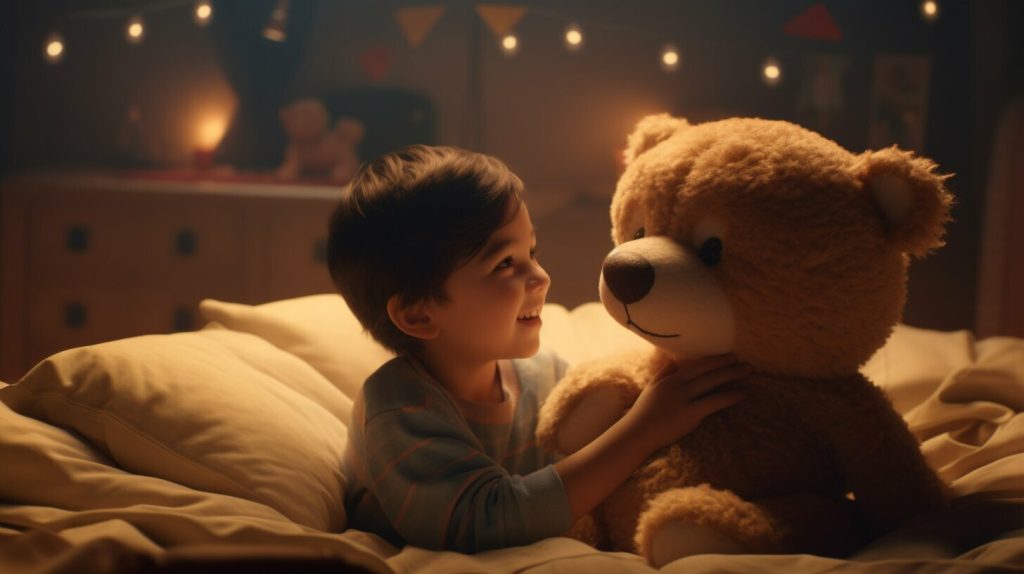
Of course, every child is different, so paying attention to their individual needs and adjusting your approach accordingly is important.
If your child is particularly anxious or has trouble sleeping alone, you may need to continue snuggling for a little longer.
On the other hand, if your child is already sleeping soundly without cuddles, you may be able to phase them out earlier.
Whatever your approach, it’s important to be patient and consistent. Gradual transition from bedtime cuddling can be helpful, as can establishing a bedtime routine and sleep training techniques.
By gently encouraging your child to develop their independence at bedtime, you can help establish healthy sleep habits that will benefit them for years.
Establishing Independence at Bedtime
As parents, we all want to provide our children with the best possible sleep habits to ensure they are healthy and happy.
One important aspect of this is establishing independence at bedtime, allowing our children to fall asleep without being cuddled to sleep.
Transitioning from cuddling to independent sleep can be difficult for both the child and the parent.
Here are some tips to make the process smoother:
- Start small by gradually reducing the amount of time spent cuddling each night.
- Encourage your child to self-soothe by introducing a comfort item like a blanket or stuffed animal.
- Establish a consistent bedtime routine to help your child feel secure and relaxed.
Remember, each child is different, and there is no one-size-fits-all approach to establishing independence at bedtime.
Be patient and consistent, and don’t be afraid to ask for support from professionals or other parents who have been through the process.

Developing a Bedtime Routine
A consistent bedtime routine is key to promoting healthy sleep habits in children.
By creating a predictable sequence of events leading up to bedtime, we can help children feel secure and relaxed, making it easier for them to fall asleep on their own.
Bedtime routines include various activities, such as a warm bath, reading bedtime stories, or singing a lullaby.
The key is to choose calming and enjoyable activities for your child and perform them in the same order every night.
It’s also important to set a regular bedtime and wake-up time, even on weekends. This helps regulate your child’s internal clock and promotes a healthy sleep/wake cycle.
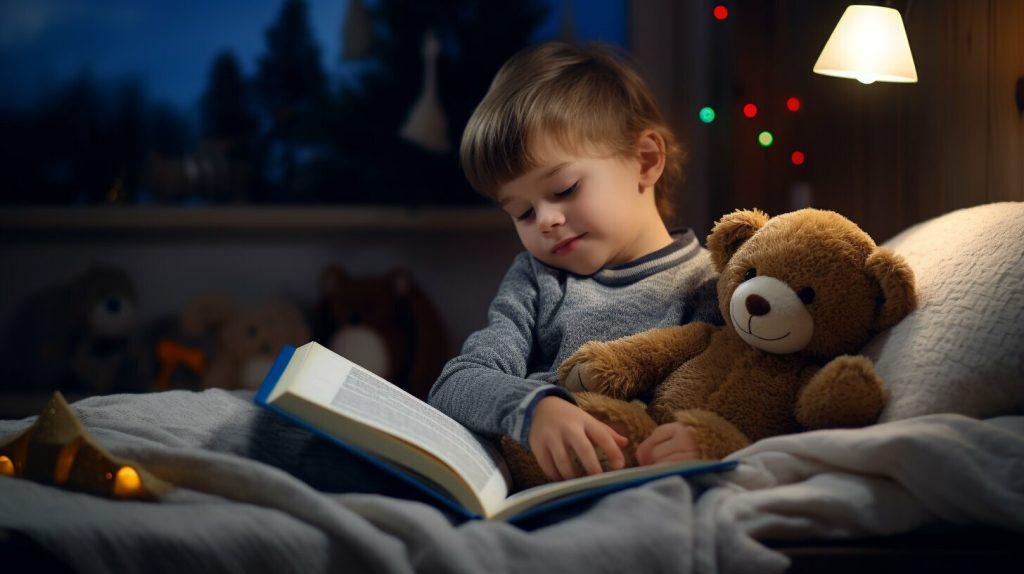
Creating a bedtime routine can take time and experimentation, so be patient and flexible as you figure out what works best for your family.
Just remember to keep the routine consistent and encourage your child to gradually take on more bedtime responsibilities, such as choosing a book or brushing their teeth.
Gentle Sleep Training Techniques
If your child is struggling to fall asleep on their own, there are several gentle sleep training techniques you can try.
These approaches focus on gradually teaching your child to self-soothe and become more independent at bedtime:
| Technique | Description |
|---|---|
| Bedtime fading | Gradually moving bedtime later in small increments to help your child become more tired and ready for sleep. |
| Bedtime routine fading | Gradually increase the time between check-ins when your child cries or fusses at bedtime. |
| Graduated extinction | Gradually increasing the amount of time between check-ins when your child cries or fusses at bedtime. |
Remember that every child is different, so choosing a sleep training approach that feels comfortable and appropriate for your family is important.
Gradual Transition from Bedtime Cuddling
Transitioning away from cuddling your child to sleep can be a difficult and emotional process for you and your little one.
However, it is an important step in fostering healthy sleep habits and promoting independence at bedtime.
Here are some guidelines to help you gradually transition away from bedtime cuddles:
| Step | Instructions |
|---|---|
| 1 | Establish a consistent bedtime routine your child can rely on to help them feel secure and relaxed. This may include a warm bath, a story, and a lullaby. |
| 2 | Encourage your child to self-soothe by providing a comfort item, such as a favourite blanket or stuffed animal, to snuggle with at bedtime. |
Remember that every child is different, and there is no one-size-fits-all approach to transitioning away from bedtime cuddles.
Some children may be ready to stop cuddling at an earlier age, while others may need more time and patience.
It’s important to go at your child’s pace and respect their feelings throughout the process.

Gradual separation sleep training can be a gentle and effective way to help your child develop independence at bedtime.
By gradually reducing the time you spend cuddling your child each night and encouraging self-soothing, you can help your child feel more confident and secure at bedtime.
Helping Your Child Fall Asleep Without Cuddling
In the previous section, we discussed gradually transitioning from bedtime cuddling to encourage independence.
But what if your child still struggles to fall asleep without cuddling? Don’t worry, it’s a common issue, and there are ways to help your child learn to fall asleep on their own.
Firstly, it’s important to establish a consistent bedtime routine that helps your child wind down and relax before sleep.
This might include a calming bath, reading bedtime stories, or listening to soft music. Avoid stimulating activities or screen time in the hours leading up to bedtime.
Next, consider introducing a transitional object for your child to snuggle with, such as a soft toy or blanket.
This can provide a sense of comfort and security without the need for physical contact with you. Just make sure the object is safe and appropriate for your child’s age.
If your child still struggles to fall asleep without you, try gradually reducing your physical presence at bedtime.
For example, you might start by sitting next to their bed for a few minutes until they fall asleep, then gradually move further away each night.
Alternatively, you could try a gentle sleep training method, such as the “fading” technique, which involves gradually delaying the time it takes for you to respond to your child’s requests for comfort.
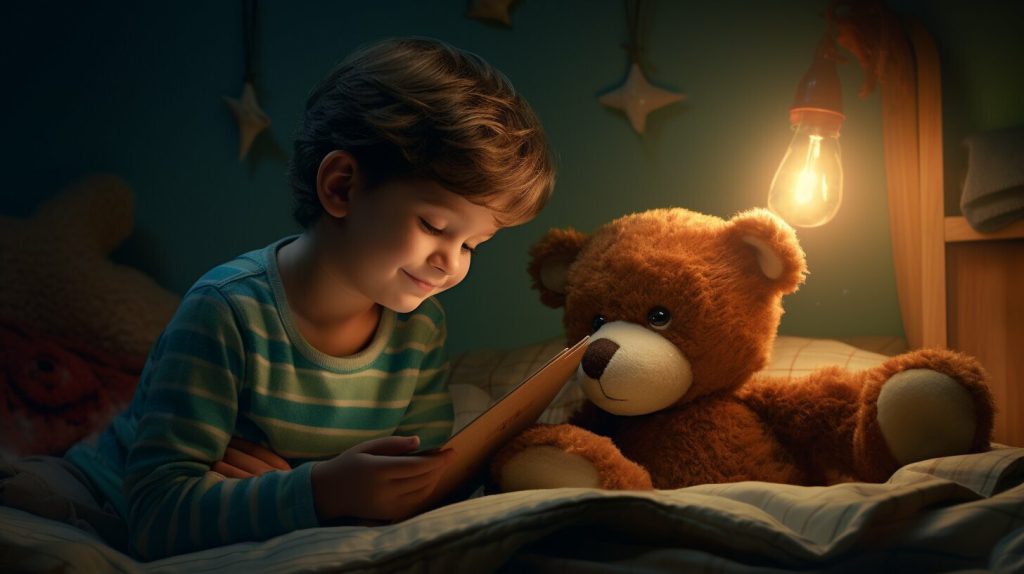
Remember, it’s important to be patient and consistent when helping your child learn to fall asleep without cuddling.
It may take some time for them to adjust to the new routine, but with patience and persistence, they will develop healthy sleep habits and learn to self-soothe.
Understanding Sleep Associations
One of the key elements of sleep training for toddlers is breaking associations between certain sleep stimuli and falling asleep.
These sleep associations can become problematic if they require input from a parent or caregiver, such as cuddling, nursing, or rocking, as it can make it hard for a child to fall asleep on their own.
What are sleep associations?
Sleep associations are the things that a child needs to fall asleep. In the beginning, many parents use a variety of techniques to soothe their babies to sleep, like cuddling or rocking them.
Over time, these techniques can become associated with sleep, and the child may require them to fall asleep.
Why are sleep associations a problem?
While there is no harm in cuddling or rocking your child to sleep when they are young, over-reliance on these methods can create problems down the line.
If a child requires a specific sleep association to fall asleep, they are likely to wake up when that association is no longer present. This can make it hard for them to self-soothe and fall back asleep, resulting in more frequent night waking.
How can we break sleep associations?
While breaking sleep associations can be challenging, it is an essential aspect of sleep training.
Gradual withdrawal techniques, such as leaving the room while the child is still awake, can help the child learn to fall asleep without assistance.
What is the role of self-soothing techniques in breaking sleep associations?
Self-soothing techniques can also be helpful in breaking sleep associations. Encouraging your child to soothe themselves to sleep can help reduce their reliance on specific sleep associations.
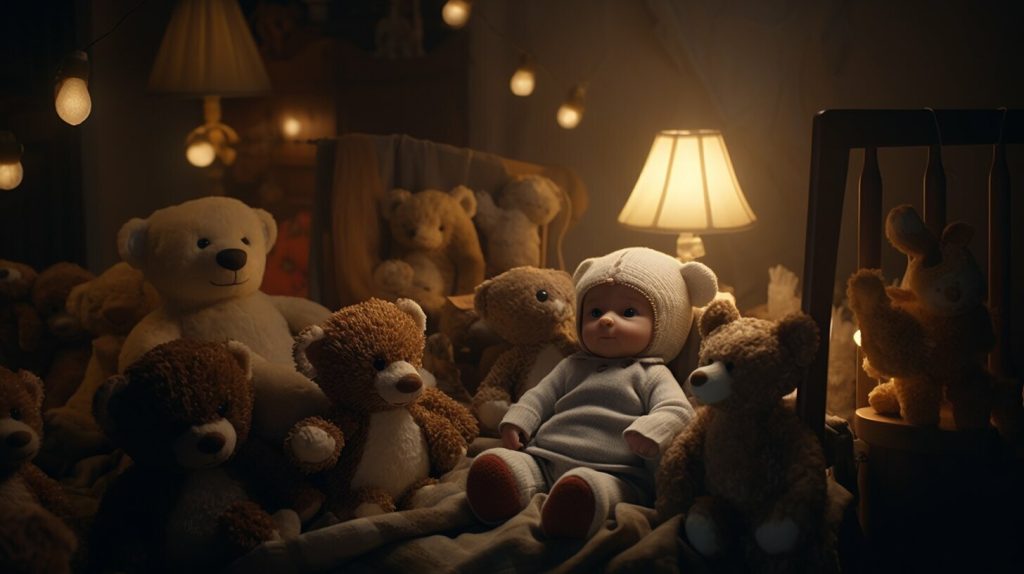
It is important to understand the role that sleep associations play in your child’s sleep patterns.
Breaking these associations can be challenging but is essential to foster healthy sleep habits in your child.
Gradual withdrawal and self-soothing techniques can help your child learn to fall asleep without input from a parent or caregiver.
The Appropriate Age to Stop Snuggling at Night with Kids
As children grow, their sleep habits change, and this includes their desire for bedtime cuddles.
While there is no hard and fast rule for when to stop snuggling with your child at night, experts suggest that it is typically between the ages of 2 and 5.
It’s essential to remember that each child is unique and may have different sleep preferences.
Some children may enjoy snuggling for longer, while others may prefer to sleep independently from an earlier age.
However, encouraging healthy sleep habits from a young age is crucial for your child’s development.
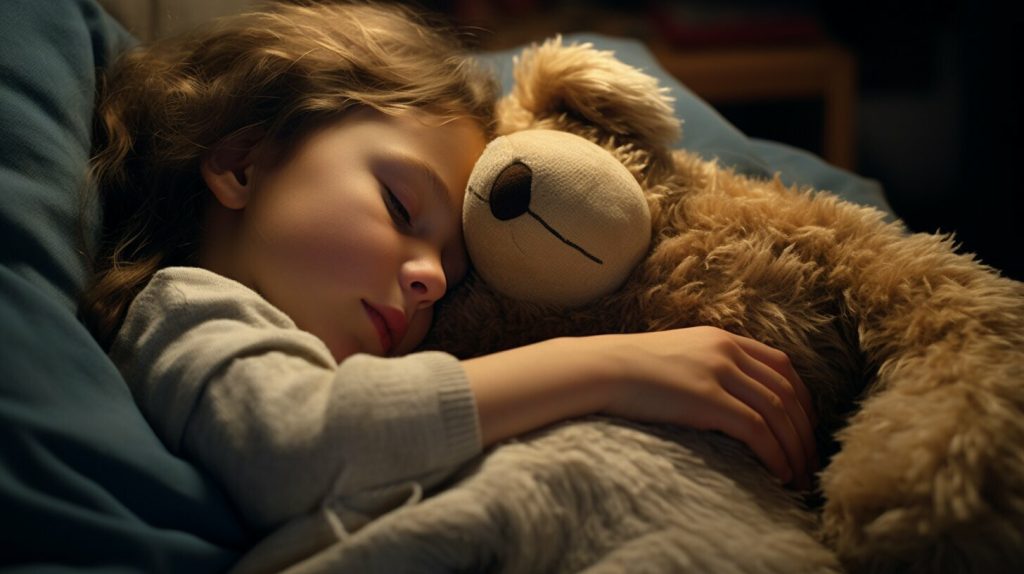
Transitioning From Co-Sleeping
If you have been co-sleeping with your child, transitioning to independent sleep can be challenging.
However, it is crucial for your child’s sleep development and overall well-being. Consider starting the transition with daytime naps before moving on to nighttime sleep.
A gradual transition can help with the process, where you gradually spend less time snuggling with your child until they can fall asleep independently.
Alternatively, you can try gentle sleep training methods that promote self-soothing and establish healthy sleep habits.
Fostering Healthy Sleep Habits
Healthy sleep habits are crucial for your child’s development, including teaching them to fall asleep independently.
Creating a consistent bedtime routine that encourages relaxation and sleep can help foster healthy sleep habits.
As your child grows and transitions away from snuggling to sleep, consider encouraging self-soothing techniques, such as using a comfort object or playing quiet music.
Remember that this transition takes time, and each child will adjust at their own pace.
There is no exact age when you should stop snuggling your child to sleep.
However, encouraging healthy sleep habits is crucial for their development, and establishing a consistent bedtime routine can help foster independence at bedtime.
While it may be challenging, transitioning away from nighttime cuddling can help set your child up for a lifetime of healthy sleep habits.
Final Thoughts
As parents, we all want our children to develop healthy sleep habits and achieve a good night’s rest.
It can be challenging to transition from cuddling to sleep to independent sleeping, but it is essential for our children’s development and well-being.
There is no set age at which to stop cuddling your child to sleep, but it is important to establish healthy sleep habits early on.
Encouraging independence at bedtime can help our children learn to self-soothe and fall asleep on their own.
Transitioning away from bedtime cuddles should be done gradually, and developing a consistent bedtime routine can help in this process.
Sleep associations should also be considered, and parents can use gentle sleep training methods to encourage self-soothing and promote solo sleeping.
Remember, every child is different, and what works for one may not work for another. Trust your instincts as a parent and seek support and advice when needed.
With patience, consistency, and kindness, we can help our children develop healthy sleep habits that will benefit them for a lifetime.
FAQ
Q: At what age should you stop cuddling your child to sleep?
A: The optimal age for stopping bedtime cuddles varies for each child, but most experts recommend gradually transitioning away from cuddling around 2-3 years old. It’s important to consider your child’s development and individual needs when making this transition.
Q: Why is establishing healthy sleep habits important?
A: Establishing healthy sleep habits is crucial for your child’s development. It promotes better sleep quality, improves cognitive function, supports emotional regulation, and enhances overall well-being.
A consistent sleep routine helps your child develop self-soothing skills and promotes better sleep patterns.
Q: When should parents transition away from cuddling to sleep?
A: There is no set age for transitioning away from cuddling to sleep, as every child is different.
However, most children are ready for this transition when they show signs of independence and can self-soothe. It’s important to follow your child’s cues and make the transition gradually, ensuring they feel safe and secure throughout the process.
Q: What is the appropriate age to stop snuggling at night with kids?
A: The appropriate age to stop snuggling with kids at night depends on their needs and developmental stage.
Typically, children start to show signs of wanting more independence around 2-3 years old. However, it’s essential to approach this transition with sensitivity and adjust based on your child’s comfort and readiness.
Q: How can I establish independence at bedtime?
A: To establish independence at bedtime, gradually introduce self-soothing techniques and encourage your child to fall asleep on their own.
This can involve creating a consistent bedtime routine, providing comfort objects, and gradually reducing physical contact during bedtime. Patience and consistency are key during this process.
Q: How can I develop a bedtime routine?
A: Developing a bedtime routine involves creating a consistent sequence of activities that signal to your child that it’s time to wind down and prepare for sleep.
This may include activities such as bathing, reading a story, or practising relaxation techniques. Establishing a predictable routine helps your child feel secure and sets the stage for a good night’s sleep.
Q: How can I gradually transition from bedtime cuddling?
A: Gradually transitioning from bedtime cuddling involves gradually reducing physical contact during bedtime.
Start by minimizing the amount of time spent cuddling and gradually introduce other soothing techniques, such as gentle back rubs or using a comfort object.
This gradual approach helps your child feel secure as they learn to fall asleep independently.
Q: How can I help my child fall asleep without cuddling?
A: Helping your child fall asleep without cuddling requires patience and consistency. Create a comforting sleep environment, establish a consistent bedtime routine, and gradually reduce physical contact during the bedtime routine.
Offering reassurance and teaching self-soothing techniques can also support your child in developing the skills to fall asleep independently.
Q: What are sleep associations, and how do they impact sleep?
A: Sleep associations are the conditions or actions a child associates with falling asleep. Examples include being rocked, cuddled, or using a pacifier.
While some sleep associations are harmless, if they become necessary for your child to fall asleep, they can disrupt sleep when they occur during the night.
Gradually transitioning away from sleep associations can promote independent sleep.
Q: How can I transition from co-sleeping to independent sleep?
A: Transitioning from co-sleeping to independent sleep requires patience and a gradual approach. Start by establishing a consistent sleep routine and gradually move your child into their own bed.
Offer comfort and reassurance, and be consistent with your expectations.
This transition may take time, so be prepared for some resistance and provide plenty of support.

